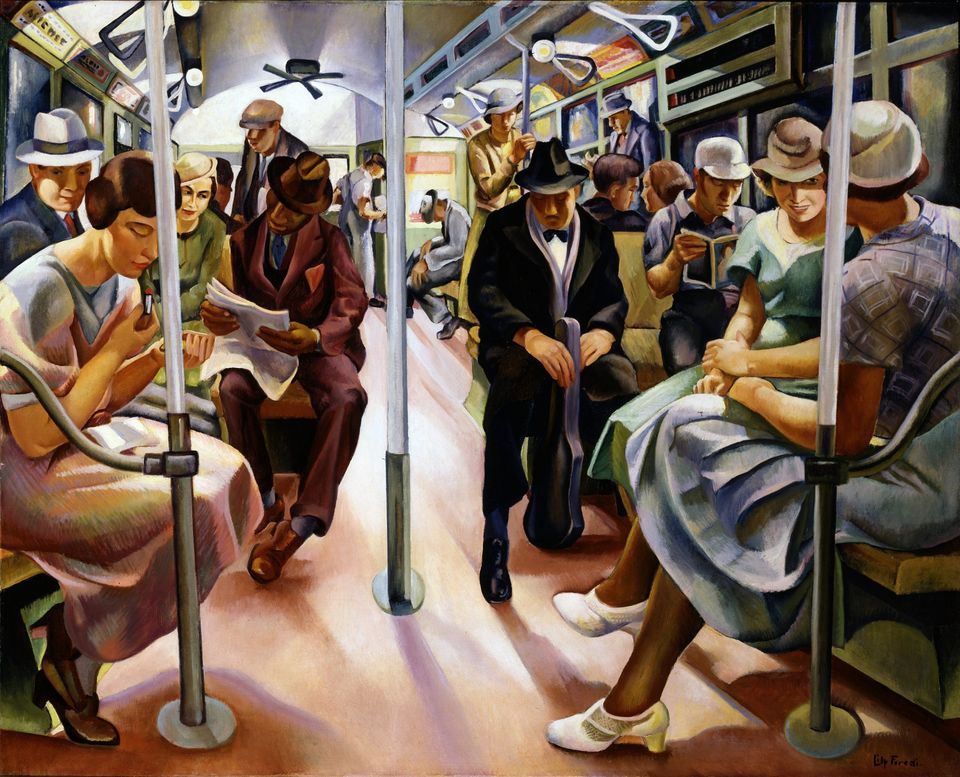

The other day while taking the Metro (that's D.C.-speak for subway) to the Smithsonian, I spotted something on the floor below the seat across from me. When I got up at my stop, I took a closer look and noticed that it was a little two-sided brush. Too small for even the smallest artist (though I recently learned that Mughal miniaturists often used a brush made of no more than one or two squirrel hairs), it was a brush for applying makeup—some blush or eyeliner, perhaps? Throw in a little lipstick, and that's pretty much as far as my makeup vocabulary will take me.
Growing up in Brooklyn, and later on, attending grad school in Manhattan, I became something of a connoisseur of the subway. I'm sure all New Yorkers (even those who've left) feel that. As a young person, the subway meant freedom. Getting older and heading to school and work, however, it meant rush-hour crowds, stifling hot platforms in summer, and enough crowded cars to make even the most tightly packed sardines feel free-range.
Often on the subway, there would be a woman applying her makeup right there on the train. I always thought it was magic to watch this rite performed in public, usually done in a hurry. As an experienced subway observer, you look but kind of don't look at the same time. Call it Subway 101.
In Lily Furedi's homage to the New York subway, part of the current exhibition 1934: A New Deal for Artists, I'm captivated mostly by the woman applying lipstick on the far left—so much that I want to create a narrative for her. Unlike most of the other women in the car, she doesn't wear a hat, but rather wears her hair in a style Martha Graham often wore, called "squash blossom." (Graham copied this style from American Indian women she met in the Southwest.) It also reminds me of Princess Leah at the same time. I wonder then, is the woman in the painting a dancer on her way to rehearsal, or perhaps a performance? This I do know: Martha Graham and her contemporaries were as much products of the times as were the visual artists represented in 1934. Dancers responded to the challenges of the day through movement, turning the art form on its head.
But here's the rub: when Martha Graham talked about those times, she said that after a rehearsal uptown, she had to choose between buying lunch and taking public transportation back to her apartment in the Village. She always chose lunch. Unable to afford both, she walked back home. So perhaps the woman in Furedi's painting is not a dancer. Maybe she's about to get off at the next stop and enter an office, the theater, or meet up with a date. Hopefully, she won't drop anything on the floor...
Related Material:
1934: A New Deal For Artists exhibition slide show
Add your own images from 1934 to American Art's Flickr group

















